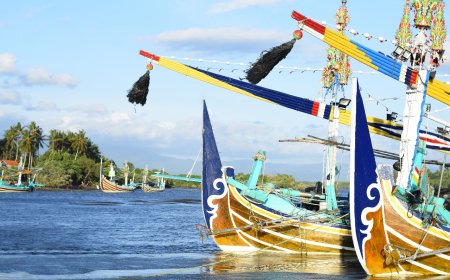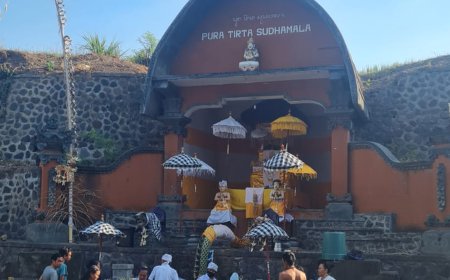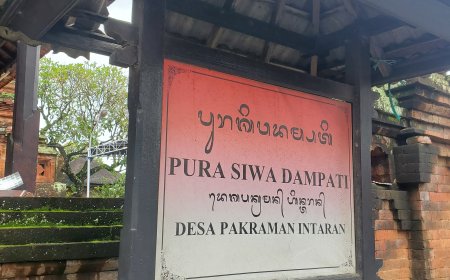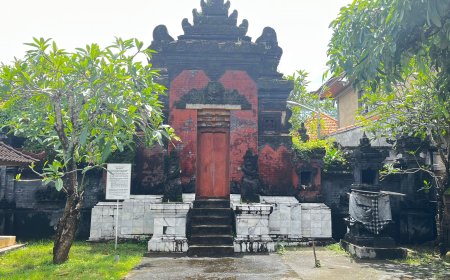Tracing the Historical Traces at Pegulingan Temple, Tampaksiring
Pegulingan Temple in Tampaksiring, Gianyar, Bali, is a historical temple built in the 8th century AD. Combining Hindu and Buddhist elements, the temple has the relics of the Dhyani Aksobya Buddha Statue. According to Lontar Usana Bali, this temple was founded during the reign of King Masula Masuli in 1178 AD. In addition to functioning as a place of worship, Pegulingan Temple has also developed into a spiritual tourist destination that offers a calm atmosphere and stunning natural beauty.
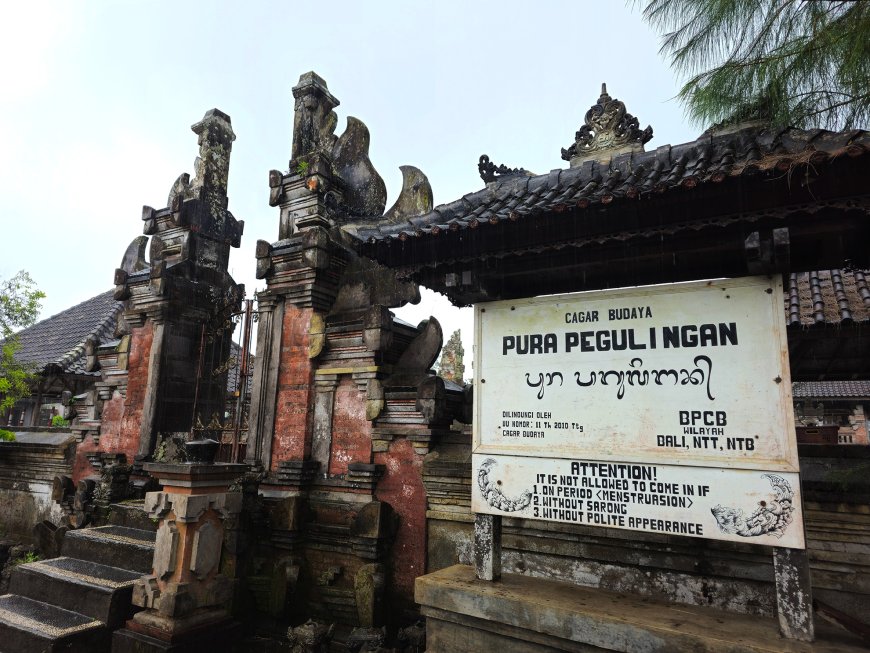
Pegulingan Temple, located in Banjar Basangambu, Manukaya Village, Tampaksiring District, Gianyar, is one of the historic temples in Bali. Its strategic location, just 1.5 km from Pura Tirta Empul, makes it easily accessible. Visitors who wish to visit this temple are advised to use two-wheeled vehicles due to the narrow access road. Pura Pegulingan represents a blend of Hindu and Buddhist teachings, which occurred around the ancient Bali era, approximately in the 8th century AD. This can be seen from the presence of the Dhyani Aksobya Buddha statue.
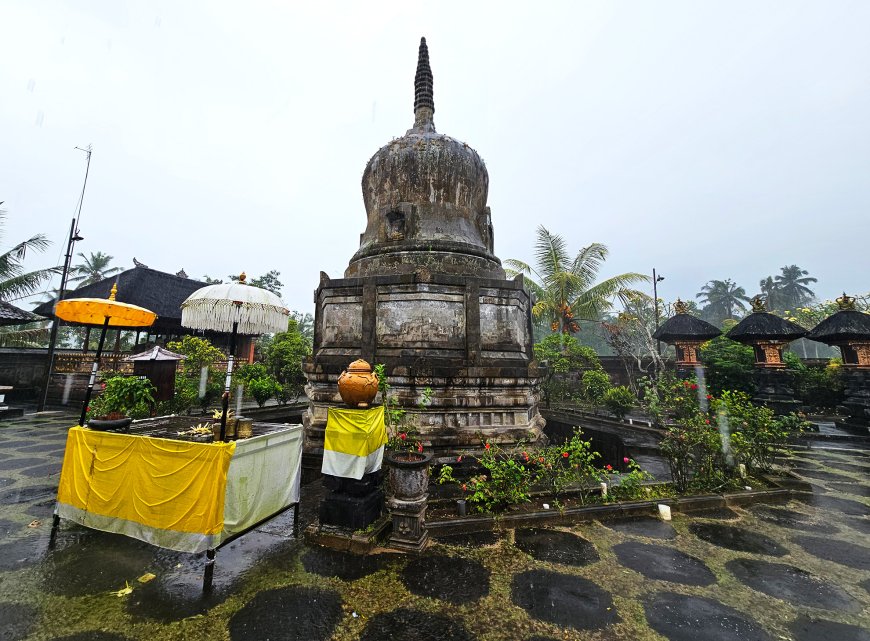 Octagonal Building (Photo Source: Personal Collection)
Octagonal Building (Photo Source: Personal Collection)
According to the Lontar Usana Bali, Pura Pegulingan was built during the reign of King Masula Masuli in Bali in the year Caka 1100 (1178 AD). The Lontar Usana Bali mentions that the construction of this temple was part of a large project involving several other temples such as Tirta Empul, Mangening, Ukir Gumang, Jempana Manik (Gulingan), Alas Arum (Blahan), Tirta Kamandalu, Penataran Wulan Tample, Puser Tasik, and Manik Ngereng. All these temple constructions were planned by King Masula Masuli together with Mpu Raja Kertha.
The lontar also states that King Masula Masuli ordered officials and Mpu to build these temples as places of worship for gods such as Bhatara Hyang Indra and Bhatara Hyang Suci Nirmala. The construction involved the entire Balinese population from various regions in Bali. The Balinese people were very enthusiastic and happy to participate in the construction of these temples, contributing building materials such as paras stones from Blahbatuh, Pejeng, and Tampaksiring.
The construction of the temples in the project led by King Masula Masuli together with Mpu Raja Kertha was carried out with full participation from the Balinese community. The involvement of the community in building these sacred places gave them a sense of pride as they could directly contribute to the project. The construction of these temples is estimated to have taken about three years. Thanks to the cooperation of the Balinese people, Pegulingan Temple and other temples built during the reign of King Masula Masuli not only became places of worship but also symbols of unity and the spirit of mutual cooperation. To this day, these temples remain an important part of the spiritual and cultural life of the Balinese people.
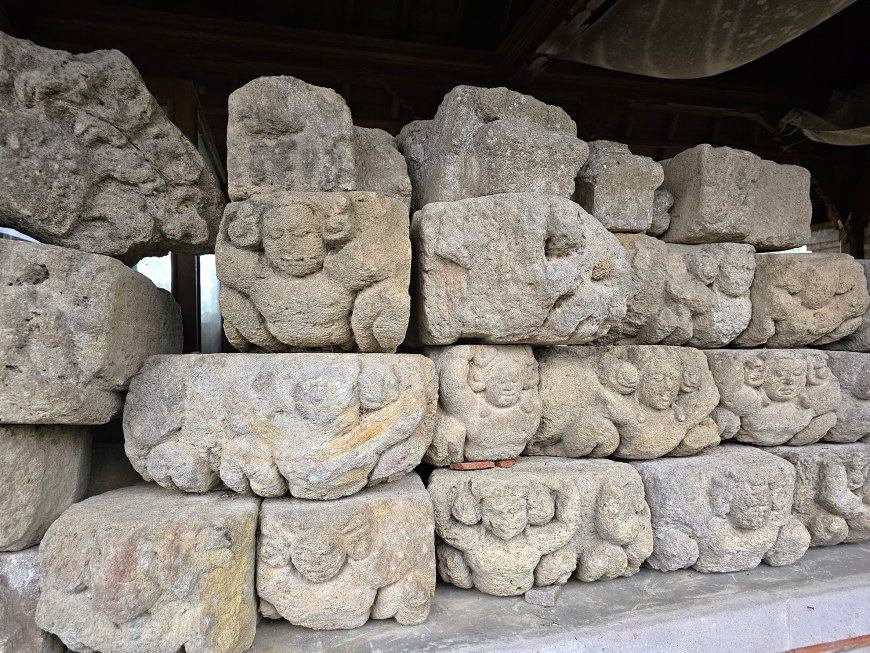 Buddha Statue of Pura Pegulingan (Photo Source: Personal Collection)
Buddha Statue of Pura Pegulingan (Photo Source: Personal Collection)
During explorations at Pegulingan Temple, Tampaksiring, various important artifacts can be found that provide deep insights into Balinese history and culture. Among these findings are the octagonal building foundation, Buddha statues, and a stone box containing clay material inscribed with the “Ye-Te” formula in Pranagari script in Sanskrit. This inscription outlines the Mahayana Buddhist mantra regarding Dharma teachings, one of which reads:
“Ye Dharma Hetu-prabhawa Hentu tesantathagoto hyawadat Tesab ca yo nirodka Evam wadi mahasra manah” (Goris, 1948)
Which means: “The Buddha (tathagata) said that Dharma is the cause of all events and the cause of destruction and suffering. That is the teaching of the Great Ascetic.”
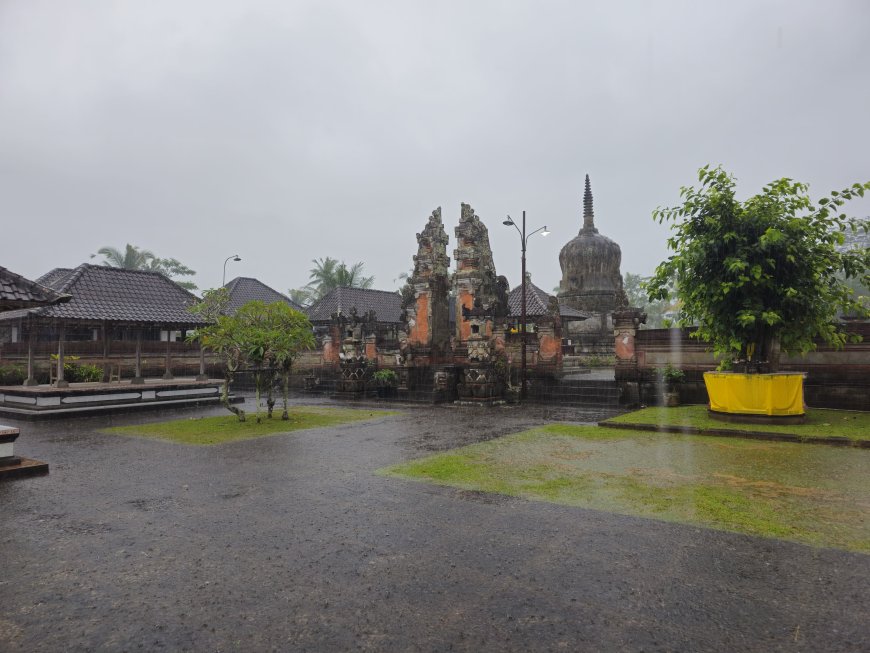 Jaba Pura Pegulingan (Photo Source: Personal Collection)
Jaba Pura Pegulingan (Photo Source: Personal Collection)
Pegulingan Temple not only serves as a place of worship but also as an attractive tourist destination for visitors who want to delve into Balinese history and culture. Besides its historical and spiritual value, Pura Pegulingan also offers stunning natural beauty. Located in an area surrounded by green trees and fertile rice fields, this temple provides a serene and peaceful atmosphere for its visitors. The natural beauty around this temple further enhances its appeal as an ideal place for meditation and self-reflection.
As one of the destinations full of historical value, Pegulingan Temple invites every visitor to delve deeper into the meaning of Bali's rich culture that has been preserved for centuries. The integration of natural beauty, architecture, and spiritual heritage makes this temple the perfect place to experience peace and self-introspection. By appreciating this cultural and spiritual heritage, we not only get to know more about Bali's history, but also help maintain the sustainability of values that have been passed down from generation to generation. Pegulingan Temple is not only a witness to the past, but also a reflection of relevant wisdom for the present and the future.









